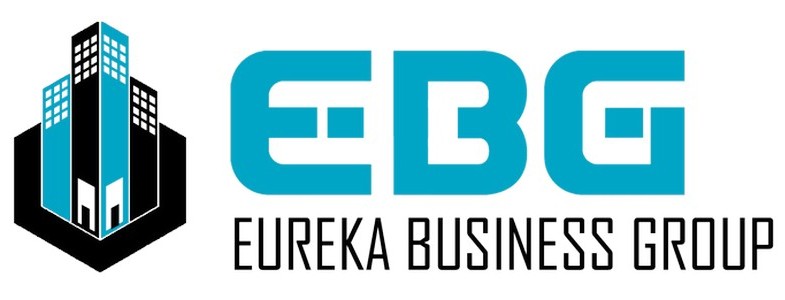- Home
- Industrial
- Industrial Investors Resources
- How to Transition from Other Commercial Investments to Industrial Flex!
How to Transition from Other Commercial Investments to Industrial Flex!
Transitioning from traditional commercial investments, such as office or retail spaces, to industrial flex properties can be a strategic move for investors. Industrial flex spaces—a blend of office, warehouse, and sometimes showroom areas—offer unique advantages, including diverse tenant appeal, high occupancy rates, and the ability to pivot for changing market demands. If you’re considering expanding your portfolio or transitioning fully into industrial flex properties, here’s a guide on how to make the shift smoothly and successfully.
Understanding the Industrial Flex Space Appeal
Before diving in, it’s essential to grasp what makes industrial flex properties attractive:
- Versatile Tenant Base: Industrial flex spaces are appealing to various businesses, from tech startups needing warehousing to e-commerce companies requiring logistical space. This versatility can help investors capture consistent rental income, even when market demands shift.
- Adaptability: Flex spaces offer flexible configurations, easily accommodating different business needs, such as warehouse storage, production, or office setups. This flexibility enhances the property’s usability, making it easier to attract and retain tenants.
- Resilience in Market Downturns: Unlike traditional retail, which can be vulnerable during economic slowdowns, industrial flex properties are less dependent on consumer spending trends and can remain resilient. Businesses in need of logistics and storage space often prefer flex spaces, making them a stable investment.
Step 1: Research the Industrial Flex Market
Analyze Market Demand: Industrial flex spaces often thrive in areas with high concentrations of e-commerce, technology, and manufacturing companies. Research local market trends, analyze vacancy rates, and look at the demand for industrial flex spaces in your targeted area.
Evaluate Tenant Needs: Understanding the unique needs of industrial tenants is key to ensuring you can attract high-quality, long-term occupants. Industrial tenants may prioritize features like loading docks, ceiling height, square footage, and parking access.
Look into Local Regulations: Unlike office or retail spaces, industrial flex spaces might need to meet different zoning or environmental regulations. Understanding these local restrictions can help you avoid unforeseen legal challenges and ensure the property can accommodate intended tenants.
Step 2: Evaluate the Financials and Risks
Industrial flex properties are generally high-performing investments, but they come with their own financial and operational risks:
Financial Feasibility: Industrial flex properties often require significant upfront costs for property acquisition, tenant improvements, or customizations. Conduct a thorough cost-benefit analysis to compare these initial expenses against potential rental income and long-term property appreciation.
Cap Rate Comparison: Industrial flex properties tend to offer slightly different cap rates compared to office or retail spaces. Take a close look at the cap rate trends in your target market, and ensure that they align with your financial goals.
Plan for Tenant Turnover: While flex spaces can attract diverse tenants, high tenant turnover is possible, especially if businesses outgrow the space or shift locations. Understanding tenant turnover trends and factoring this into financial planning will help you create a buffer for potential vacancies.
Step 3: Find the Right Industrial Flex Property
Look for Core Features: Certain building features can significantly impact the success of your industrial flex property. These include ceiling height (a minimum of 18-20 feet is often desirable), adequate loading dock and drive-in access, and energy-efficient systems that cater to warehouse needs.
Location Is Key: Just as in other commercial investments, location is crucial. Properties near major highways, transport hubs, or in industrial parks are usually more attractive to tenants who rely on logistics and transportation. Proximity to residential areas can also be a bonus, particularly for companies wanting easy access for employees.
Consider the Facility Layout: While office buildings and retail spaces may focus on aesthetics and foot traffic flow, industrial flex properties should prioritize functionality. A property with open, adaptable space will be easier to rent to diverse tenants.
Step 4: Establish a Solid Leasing Strategy
Tailor Your Lease Agreements: Industrial flex spaces often benefit from customized lease terms. For example, some tenants may require longer leases with tenant improvement allowances, while others might seek shorter terms with the ability to scale space up or down as needed. Structure leases to suit both the property’s flexibility and tenants’ business models.
Offer Tenant Improvement Options: Flex tenants, especially those in manufacturing or tech, often require specialized buildouts. Allocating a portion of the budget for tenant improvements can make your property more attractive and help you secure higher-caliber tenants.
Consider Triple Net (NNN) Leases: Many industrial properties operate on NNN leases, where tenants are responsible for property taxes, insurance, and maintenance. This setup can reduce your management workload and transfer some financial responsibility to the tenant, although the lease structure should align with local market expectations.
Step 5: Transition Your Management Approach
Transitioning from other commercial real estate to industrial flex may require a shift in management style. Industrial flex properties tend to have distinct tenant requirements and unique operational demands:
Create a Maintenance Plan: Industrial tenants may have heavier demands for HVAC, plumbing, and electrical systems. Regularly inspect and maintain these systems to ensure that they meet the specific needs of tenants and reduce unexpected costs.
Monitor Building Security: Many industrial flex tenants store valuable equipment or inventory on-site, making security a priority. Upgrading locks, installing security cameras, or adding gated access points can appeal to prospective tenants and help protect your investment.
Leverage Technology for Efficiency: Modern property management software can assist with tenant communication, track maintenance requests, and streamline lease administration. Investing in the right technology can improve operational efficiency and help you manage tenant needs effectively.
Step 6: Prepare for Scaling Your Flex Space Portfolio
Industrial flex investments often provide excellent opportunities for portfolio growth:
Consider Multi-Tenant Properties: Multi-tenant flex properties allow you to diversify your tenant base and reduce vacancy risk. These properties can range from small business parks to larger complexes that cater to multiple industries, allowing for income diversity and financial stability.
Focus on Long-Term Tenant Relationships: Retaining tenants over the long term can increase stability and reduce turnover costs. Offering lease renewals, making improvements, and maintaining open communication will strengthen tenant relationships and make your property more attractive to future occupants.
Plan for Property Upgrades: Industrial flex properties are likely to need renovations or upgrades to stay competitive. Stay updated on trends in tenant requirements, such as energy-efficient systems, EV charging stations, or tech-ready spaces. Investing in these improvements can increase your property’s value and ensure it remains desirable.
Step 7: Leverage Professional Expertise
Transitioning into industrial flex spaces involves navigating new challenges, but professional expertise can ease this journey:
Work with Industrial Real Estate Brokers: A broker with specific experience in industrial real estate can help you find suitable properties, negotiate favorable terms, and identify potential risks.
Hire a Property Manager with Industrial Experience: An experienced property manager can handle daily operations, address tenant concerns, and keep the property in optimal condition, especially if you are managing a portfolio with multiple properties.
Consult with Legal and Financial Advisors: Industrial leases and property regulations can differ significantly from other commercial real estate sectors. Legal and financial advisors will help ensure compliance and sound financial planning, giving you peace of mind as you transition.
Embrace the Transition into Industrial Flex Investment
Industrial flex spaces are becoming increasingly popular due to their adaptability and the rising demand from diverse sectors. Transitioning from other commercial investments to industrial flex can enhance your portfolio’s resilience, provide steady returns, and align with modern market trends. With careful research, a strategic approach to property selection, and a focus on tenant needs, you can confidently embrace this transition and start reaping the benefits of industrial flex properties.



